The Leibniz-IZW is an internationally renowned German research institute. It is part of the Forschungsverbund Berlin e.V. and a member of the Leibniz Association. Our goal is to understand the adaptability of wildlife in the context of global change and to contribute to the enhancement of the survival of viable wildlife populations. For this purpose, we investigate the diversity of life histories, the mechanisms of evolutionary adaptations and their limits, including diseases, as well as the interrelations of wildlife with their environment and people. We use expertise from biology and veterinary medicine in an interdisciplinary approach to conduct fundamental and applied research – from the molecular to the landscape level – in close dialogue with the public and stakeholders. Additionally, we are committed to unique and high-quality services for the scientific community.
+++ Current information on African swine fever: The Leibniz-IZW conducts research on the population dynamics, on models of disease outbreaks in wild boars and on the ecology and human-wildlife interaction in urban areas. African swine fever is a reportable disease in domestic swine and therefor is the purview of the respective federal state laboratories and the Friedrich-Loeffler-Institut (Federal Research Institute for Animal Health) FLI. +++
News

All European bat species are vulnerable to artificial light at night – this varies across habitats and feeding guilds
The artificial illumination of the night by lamps is considered a central achievement of civilisation with countless economic, social and cultural benefits for people. For many animals, however, artificial light poses a considerable challenge. Nocturnal and light-shy species are forced to move to dark areas or adjust their behaviour to the new nocturnal brightness. In a paper published in the journal “BioScience”, an international research team led by the Leibniz Institute for Zoo and Wildlife Research (Leibniz-IZW) provides an evidence-based overview of the effects of artificial light on European bat species. They find that especially those species that hunt insects in narrow spaces such as forests are very sensitive to artificial light. In contrast, bats hunting along forest edges or in open areas are somewhat more tolerant of artificial light. At roosts or drinking sites all species are distinctly light-shy.
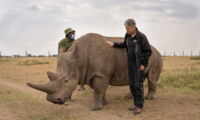
BioRescue consortium ceases egg harvesting on northern white rhino Najin following an ethical risk assessment
While attempting to save the northern white rhinoceros from extinction through advanced assisted reproduction technologies, the scientists and conservationists of the BioRescue consortium place the highest value on respecting the life and welfare of the individual animals involved. In a special, in-depth ethical risk assessment, the team has reached the decision to retire the older of the two remaining females, 32-year-old Najin, as a donor of egg cells (oocytes). This leaves the ambitious programme with just one female that can provide oocytes, Najin’s daughter Fatu. Weighing up risks and opportunities for the individuals and the entire species rendered this decision without an alternative. This situation will further strengthen the need for stem cell associated techniques, which are also part of the BioRescue mission as well as long-term biobanking. Najin will remain an important part of the mission as an ambassador for her kind and by transferring social knowledge to future offspring.
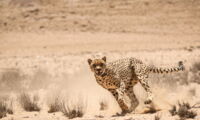
First reported case of anthrax in wildlife in the Namib Desert: Infected zebra most likely causes death of three cheetahs
Anthrax is an infectious bacterial disease endemic in some parts of Africa. It affects people, livestock as well as wildlife. Using GPS telemetry data, a team of scientists from the Cheetah Research Project of the Leibniz Institute for Zoo and Wildlife Research (Leibniz-IZW) reconstructed a special case of anthrax infection in Namibia: Three free-ranging cheetahs in the Namib Desert died within 24 hours after feeding on a mountain zebra that tested positive for the disease. The zebra is the first described case of a wild animal infected with anthrax in this arid region. The case also shows that there might be previously unknown risks to cheetah populations in the desert. It is described in detail in the scientific journal “Frontiers in Veterinary Science”.

BR50: Build up Berlin towards a worldwide leading research metropolis
On September 26th not only the elections of the German parliament will take place, but as well of the Parliament of Berlin. With a position paper developed under the umbrella of Berlin Research 50, the non-university institution of Berlin emphasize what is important for science in Berlin. The position paper contains 10 demands that should be implemented by the future senate to strengthen Berlin as science metropolis.
Read more … BR50: Build up Berlin towards a worldwide leading research metropolis
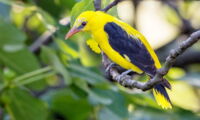
Orioles adapt the location of their wintering grounds to weather condition, analysis of historical feathers show
The ability to adjust to changing environmental conditions is an essential prerequisite for species to cope with climate change. Using stable isotope analysis, a team of scientists led by the Leibniz Institute for Zoo and Wildlife Research (Leibniz-IZW) now unravelled the link between wintering destinations of Eurasian Golden Oriole migrations and rainfall intensities in potential wintering grounds in sub-Saharan Africa. Analysing historical feathers from 1818 to 1971, they identified two distinct wintering areas whose use depended on prevailing rainfall intensity. The link between the key migratory overwintering destination and local precipitation demonstrates the dependence of these birds on rainfall in sub-Saharan Africa – a parameter that might change with climate change and related processes of desertification. The results are published in the scientific journal “Global Change Biology”.
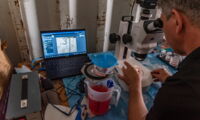
BioRescue creates another three northern white rhino embryos, bringing total to 12
In another exciting step towards the future of the northern white rhino, three more pure northern white rhino embryos have been created by the global team of scientists and conservationists working to save the species. This time, they were also able to use sperm from a different bull, improving the genetic diversity of the embryos.
Read more … BioRescue creates another three northern white rhino embryos, bringing total to 12

Sperm migration in the genital tract – computer simulations identify key factors for reproductive success
A research team at the Humboldt University Berlin and the Leibniz Institute for Zoo and Wildlife Research (Leibniz-IZW) developed an agent-based computer model to simulate the journey of sperm cells through the female genital tract. Key factors for a successful transit could be identified without the use of animal experiments and were published in the scientific journal "PLoS Computational Biology".
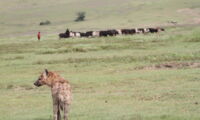
Emotions and cultural importance are most important for the acceptance of large carnivore management strategies
Emotions towards and cultural importance of large carnivores are better predictors of the acceptance of management strategies by local communities than the extent of livestock depredation. This is the result of a new interdisciplinary investigation led by scientists from the Leibniz Institute for Zoo and Wildlife Research (Leibniz-IZW). They conducted 100 questionnaires with Maasai pastoralists in Ngorongoro Conservation Area, Tanzania, focusing on three large carnivore species (spotted hyenas, lions and leopards) and three management strategies (no action, relocation and lethal control). An emphasis on socio-cultural variables is key to understanding human-carnivore relationships and challenges the traditional focus on livestock depredation in human-carnivore conflict research, the scientists conclude. The findings are published in the open access scientific journal “Frontiers in Conservation Science”.




